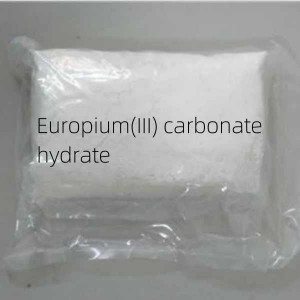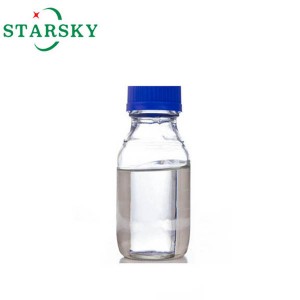Silver carbonate CAS 534-16-7
Silver carbonate (Ag2CO3) is a compound with many applications, primarily in the fields of chemistry and materials science. Here are some of its uses:
1. Synthesis of Silver Compounds: Silver carbonate is often used as a precursor for the synthesis of other silver compounds, including silver oxide and silver nanoparticles.
2. Organic Chemistry: silver carbonate CAS 534-16-7 is used as a reagent in various reactions in organic synthesis, including the oxidation of alcohols and the preparation of silver salts.
3. Photography: Historically, silver carbonate has been used in the photographic process, particularly in the production of silver halides.
4. Electrochemistry: silver carbonate CAS 534-16-7 Can be used for electrochemical applications, such as the production of silver-based electrodes.
5. Antibacterial Applications: Due to the antibacterial properties of silver, silver carbonate can be used in coatings or materials that require antibacterial properties.
6. Research: In laboratory settings, silver carbonate CAS 534-16-7 is used in a variety of research applications, including those related to materials science and nanotechnology.
7. Catalysis: It can act as a catalyst in certain chemical reactions.
Packed in 25 kg per drum or based on customers' requirements.

To safely and effectively store silver carbonate (Ag2CO3), follow these guidelines:
1. Container: Store silver carbonate in an airtight, opaque container to protect from light and moisture. Glass or high-density polyethylene (HDPE) containers are usually suitable.
2. Environment: Store the container in a cool and dry place away from direct sunlight and heat sources. Avoid storage in places with high humidity, as moisture can affect the stability of the compound.
3. Label: Clearly label containers with contents, concentration, and any relevant hazard information.
4. Isolation: Store silver carbonate away from incompatible substances (such as strong acids or reducing agents) to prevent any potential reactions.
5. Safety Precautions: When handling compounds, ensure that the storage area is well ventilated and that appropriate safety equipment (such as gloves and goggles) is used.
6. Disposal: Observe local regulations regarding disposal of silver compounds as they may be harmful to the environment.
When transporting silver carbonate CAS 534-16-7, it is important to take several precautions to ensure safety and compliance with regulations. Here are some important considerations:
1. Regulatory Compliance: Check and follow local, national, and international regulations regarding the transportation of hazardous materials. Silver compounds may be classified as hazardous materials, so make sure to follow the appropriate guidelines.
2. Packaging:
Use appropriate packaging materials to protect against moisture and contain any potential leaks.
Use strong, airtight, clearly labeled containers (such as glass or high-density polyethylene).
Ensure that the packaging is appropriate for the weight and nature of the material.
3. Tag:
Clearly label the contents on the packaging, including the chemical name, hazard symbols and any relevant safety information.
Includes handling instructions and emergency contact information.
4. Documentation:
Prepare and include all necessary shipping documentation, such as a Safety Data Sheet (SDS), which provides information about the material’s hazards and safe handling.
Ensure that shipping documents comply with the regulations of the destination country.
5.Temperature control:
If applicable, ensure that the method of transport maintains appropriate temperature conditions to prevent decomposition or other reactions.
6. Operation precautions:
Train personnel involved in the transportation process on the hazards associated with silver carbonate and proper handling procedures.
Use personal protective equipment (PPE) such as gloves and goggles when handling material.
7. Emergency Procedure:
Have emergency procedures in place in case of spills or accidents during transport. This includes having spill kits and first aid supplies ready.










